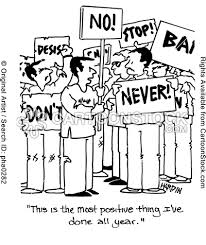Lifting our sights on World Refugee Day
June 20th, 2013 | Published in (Dis)ability, Asylum; Refugees
(Preliminary note: What follows is an abridged and edited version of an earlier post called “Detention to sanctuary via Kew Cottages”. It is my expression of hope for a more humane future.)
There is nothing particularly uplifting about the idea of detaining and excluding desperate human beings in a race-to-the-bottom exercise of sovereign rights over human rights. I am talking about asylum seekers, also called boat people, and in damaging them I believe we are also damaging ourselves.
I would like to see policies that emphasise sanctuary and inclusion, not detention and exclusion, and although I’m told that’s naïve there is an example in our recent history that shows what can be achieved with good will and hard work.
Many people would not remember the ghettoes that predated the shift, for people with disabilities, from exclusion in institutions to community living and participation; but I grew up in Kew, not far from Kew Cottages, and have blurred and rather scary memories of a vast grey structure with looming towers and blank windows – like an Alfred Hitchcock movie. I knew there were children in there somewhere, and I knew they were called imbeciles, morons, idiots, and spastics – things, really, that you knew it was bad to be.
Unsurprisingly, but importantly, the social movement towards deinstitutionalisation recognised people with disabilities as people first – with names and feelings and need for respect like anyone else. Once we allowed ourselves to know that we became capable of empathising with them, and excluding them from community became unacceptable.
 I admire those who pursued deinstitutionalisation over several decades. There must have been times when obstacles seemed insurmountable and the vision ever-receding. Their example gives me hope.
I admire those who pursued deinstitutionalisation over several decades. There must have been times when obstacles seemed insurmountable and the vision ever-receding. Their example gives me hope.
The parallel change I hope to see is for people seeking asylum, and there are stories to build on. Shepparton provides one example. Some time back, a group of young Afghani men moved in to Shepparton, and were initially treated with suspicion. But the locals came to know them as hard workers, with names and personalities and, importantly, wages that could be spent in local businesses. The community gained, and the young men likewise. More than thirty languages are now spoken in Shepparton, and delegates visit from Canberra and other States to observe this community’s response to diversity.
Such stories have, unfortunately, been swamped by dehumanising and inaccurate ones about ‘illegals’, ‘queue jumpers’, ‘irregular maritime arrivals’ and ‘potential terrorists’. These labels leave no space for personhood, just as ‘imbecile’, ‘idiot’, ‘moron’, and ‘spastic’ reduced people with disabilities to things.
Demonising people for seeking asylum makes it easier to ignore what is happening in places like Nauru, and what has been happening for far too long. If, however, we could sweep away the accreted murk, the moral imperatives are similar to those of the disability movement: we need to recognise people as human beings, liberate our capacity for empathy, replace detention and exclusion with sanctuary and inclusion, and adjust accordingly.
There are, of course, other precedents if we take the time to notice. Toronto, for example, recently declared itself a sanctuary city to its 200,000 ‘non-status residents’ (an order of magnitude greater than numbers in Australia). Additionally, more than thirty American cities have implemented similar policies as a way of embracing reality rather than fighting it, meanwhile bringing people into the economy and collecting taxes.
Australia could also choose pragmatic generosity.
Australia’s policies have, at some times in the past, more closely approximated sanctuary and inclusion than they do now. After the Second World War, for example, we brought refugees from Europe, and more recently we accommodated large numbers of ‘boat people’ from Vietnam (20,000 per year between 1980 and 1983). Malcolm Fraser, as then Prime Minister, considered we had an ethical responsibility to do what we could. We still have that responsibility, and could learn from those post-Vietnam years. There were obstacles then, as now, but they were not allowed to dictate policy. There was certainly fear as well, but it was not allowed to drive the agenda.
Fear swamps empathy, so that alongside the need to present the human face of people seeking asylum is the need to address fear – of the Other (anybody different), of internal displacement (jobs, housing, services being taken from Australians), of invasion (seemingly primal for Australians), and of terrorists (the link to people seeking asylum is, of course, unfounded). None of these fears are new, even the fear of terrorists having its parallel with past fear of communists that, in my childhood, had me peering anxiously under the bed, in case ‘they’ were there.
Reducing fear and distrust allows space for empathy, and empathy allows me to recognise that the person going quietly mad on Nauru could be me, or any member of my family. If we could hold this compelling truth, we might not have to wait for courageous politicians to lead the way, but might yet find that people power can create political will; this, in turn, would sweep aside obstacles.
I believe we can, and should, provide sanctuary and inclusion for people seeking asylum, and will hold that idea no matter how naïve it currently seems. Naivety and hope are close companions, and without hope there is little chance of change.

Best Themis blessings to those seeking asylum and their supporters



Denya, thanks for your comment. You make two important points: one about compassion fatigue, and the other about the causes of movement of people. It is also possible to hypothesise that compassion fatigue (a problem primarily for those who are feeling the fatigue) predisposes perception of ‘economic migrants’ rather than people seeking asylum. Both possibilities need to be tested against the evidence, and this is meticulously scrutinised, checked and rechecked in the process of assessing asylum claims. I can see that compassion fatigue may be a serious issue, and perhaps that’s why inaccurate (but powerful) references to people seeking asylum as ‘illegals’ are so readily taken up and so resistant to correction. The whole domain needs much attention at a global as well as a local level because what is currently happening does not seem to be working for anyone, least of all those on Nauru, Manus Island, Christmas Island, mainland detention centres, or in community detention in Australia (that’s without even starting to comment on what is happening in other countries)…Joan Beckwith (2020socialjustice).
I think that there is a great deal of concern about asulym seekers in many parts of the world and here in Australia because so many of those on the move are actually economic migrants claiming some form of persecution when what they are really fleeing is poverty. Personally i think that there is only a finite amount of compassion out there and it is a sort of compassion fatigue that is kicking in with every new crop of people who try to get into the countries of the west.